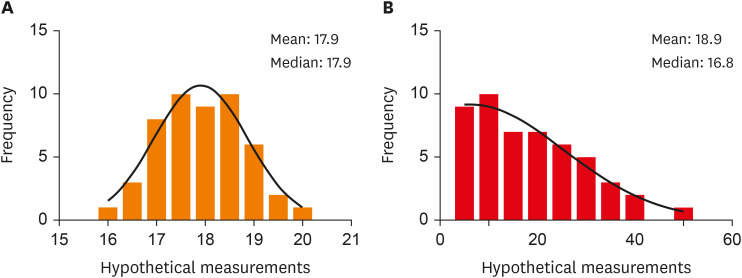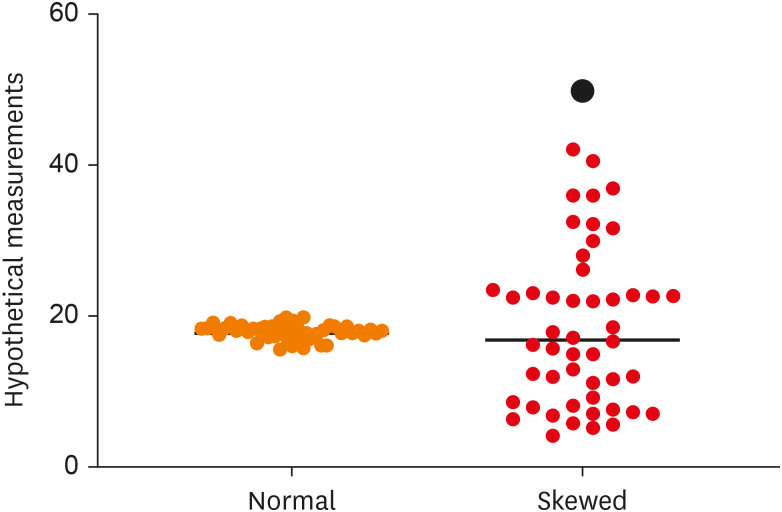Restor Dent Endod.
2024 May;49(2):e19. 10.5395/rde.2024.49.e19.
It is normal to be “not-normal”: reporting of correct descriptive statistics in dental research
- Affiliations
-
- 1Department of Dentistry, Ramkrishna Sarada Mission Matri Bhawan Hospital, Kolkata, West Bengal, India
- KMID: 2556548
- DOI: http://doi.org/10.5395/rde.2024.49.e19
Figure
Reference
-
1. Bono R, Blanca MJ, Arnau J, Gómez-Benito J. Non-normal distributions commonly used in health, education, and Social Sciences: A systematic review. Front Psychol. 2017; 8:1602. PMID: 28959227.2. Sainani KL. Dealing with non-normal data. PM R. 2012; 4:1001–1005. PMID: 23245662.3. Madadizadeh F, Ezati Asar M, Hosseini M. Common statistical mistakes in descriptive statistics reports of normal and non-normal variables in biomedical sciences research. Iran J Public Health. 2015; 44:1557–1558. PMID: 26744717.
- Full Text Links
- Actions
-
Cited
- CITED
-
- Close
- Share
- Similar articles
-
- Dental radiology reporting status and recording frequency of reporting items in Korea
- The Analysis of Research Trends of Elderly in the Dental Hygiene Discipline
- A study on the dental arch by occlusogram in normal occlusion
- Statistical Data Editing in Scientific Articles
- Suggestion of more suitable study designs and the corresponding reporting guidelines in articles published in the Journal of Educational Evaluation for Health Professions from 2021 to September 2022: a descriptive study




